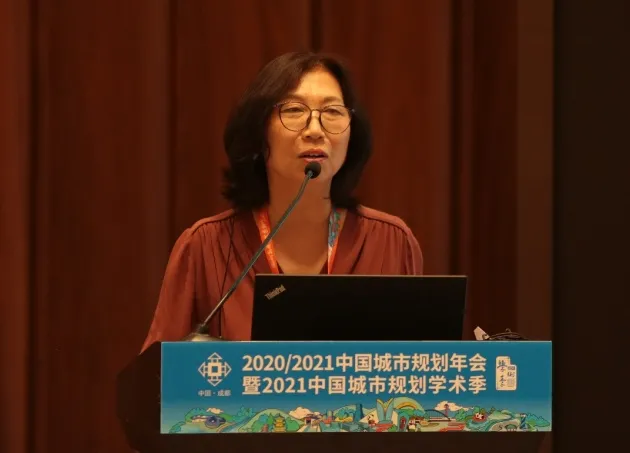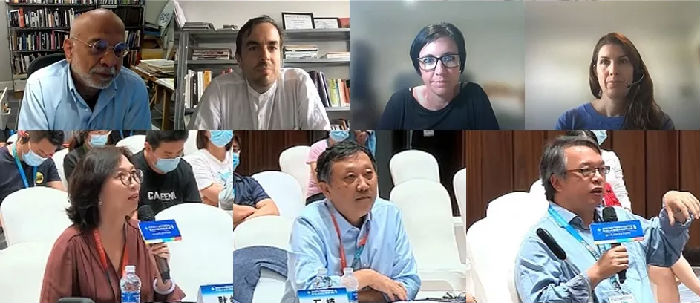


Annual National Planning Conference of China(2020/2021)
Planning Response from Multiple Perspectives
Organized by UPSC & ISOCARP

Reading guide
On September 27, 2021, as one of the important activities of the Annual National Planning Conference of China (ANPCC) (2020/2021), the special dialogue III "Planning Response from Multiple Perspectives" jointly organized by UPSC and ISOCARP was successfully held in a hybrid way of both online and offline. The participating experts shared and discussed from multiple perspectives the following topic, such as digital drive, town and village contraction, underground space, planning game and building code, and fully exchanged planning practical experience. The event attracted extensive attention of experts, scholars and colleagues around the world.

Host | Junian Hillis
Professor, University of Sydney
On behalf of ISOCARP, Junian Hilles presided over the whole meeting online. She warmly welcomed experts from China, the United States, Germany and the United Kingdom and appreciated the enthusiasm of experts in different time zones to participate in the event to fully exchange the latest progresses of planning practice in different regions of the world.
Guest Reports

Thomas Schmacher
Head of TSPA
Thomas Schmach proposed to explore solutions to urban and natural problems driven by data. He elaborated that, tn the past decade, the connotation of smart city has gradually developed from technology driven to people-oriented and nowadays, people gradually pay more attention to green solutions. How to implement the concept of sustainable development through data-driven has become an important topic.

Geng Hong
Professor, Huazhong University of Science and Technology
Geng Hong focused on the development history of towns and villages around Wuhan and shared the research results on the contraction of small towns around big cities. She pointed out that small towns play an important role in China's urban system, which not only serve big cities, but also improve the functions of villages.

Elizabeth Reynolds
Head of URBEN
Elizabeth Renolds introduced the development of urban underground space through the case of London. She proposed that the transition space between aboveground and underground is the key point to be considered in design, and various factors, such as material, light and color, need to be considered to maintain the permeability of the transition space, so as to reduce people's anxiety and worry about entering the underground space.

Ma Xiangming
Chief Planner ,Guangdong Institute of Urban-rural Planning and Design
Ma Xiangming explained the impact of regional planning on local development. He pointed out that the delimitation of urban boundaries in Chinese cities has brought adverse effects on spatial development on a larger scale. On one hand, it is difficult to define the boundary between the provision of infrastructure and public services. On the other hand, the eco-environmental problems outside the scope of the city can not be paid enough attention. In order to deal with these problems, it is necessary to establish a common development vision and promote the construction of infrastructure network through regional coordination.
Dialogue and exchange

Source: http://www.planning.org.cn
Edited and Translated by Chai Ning